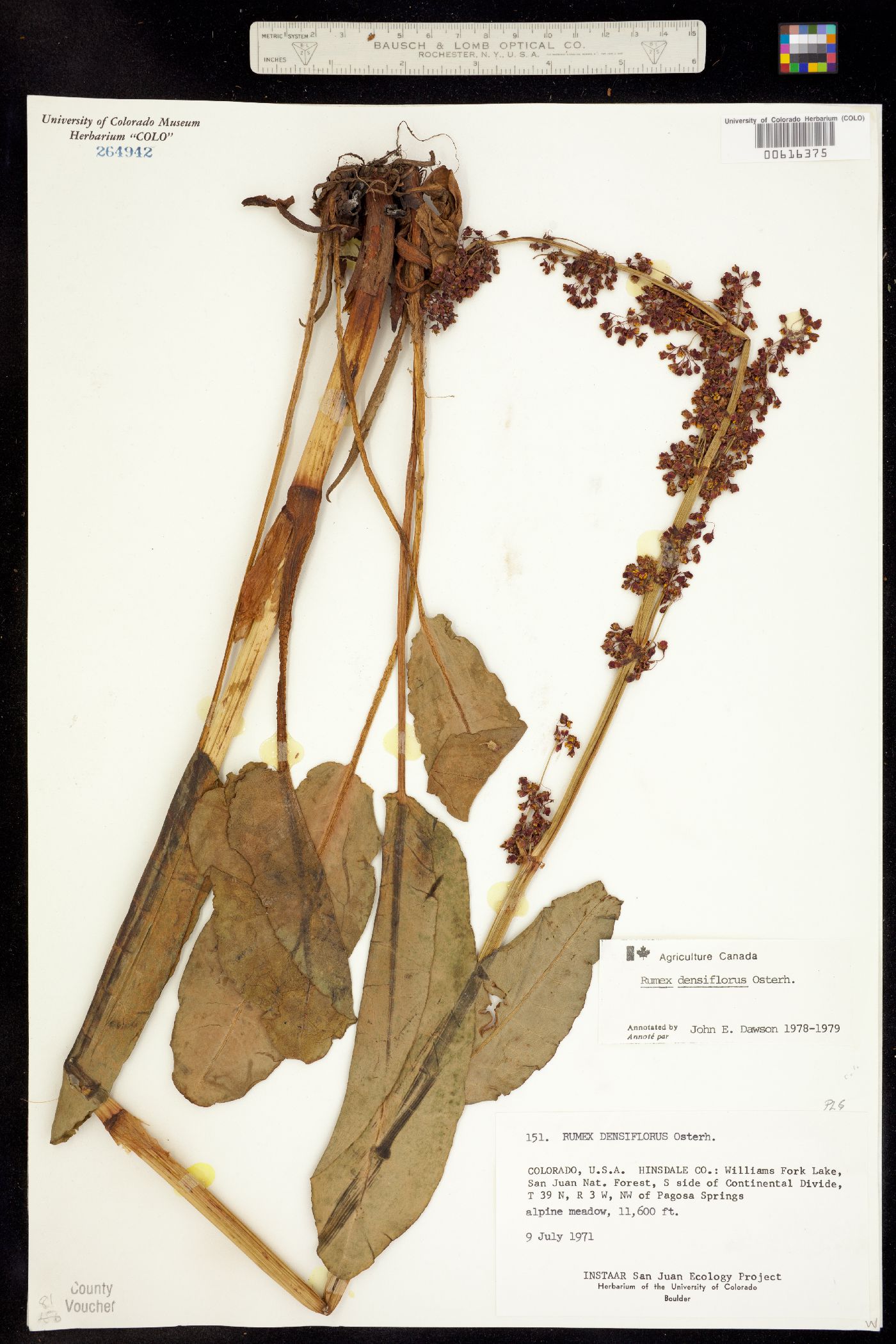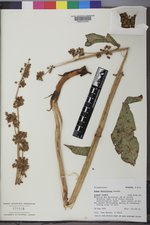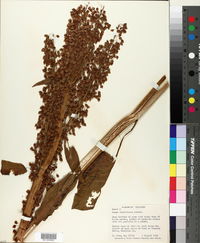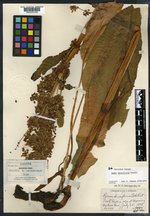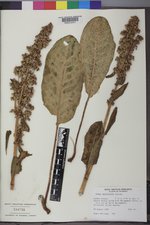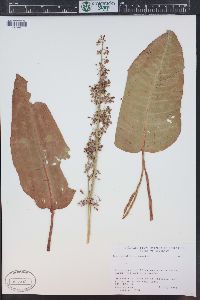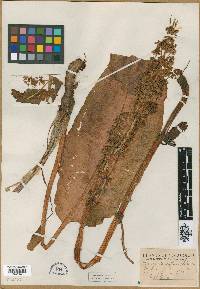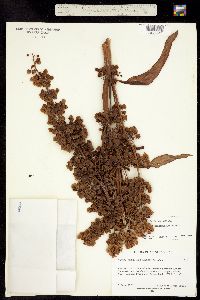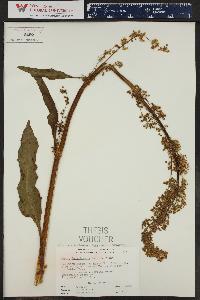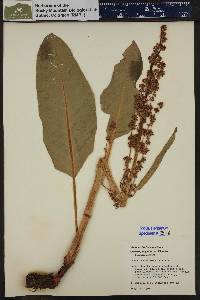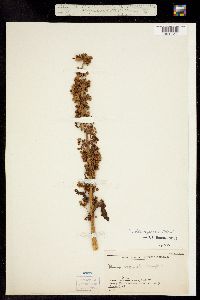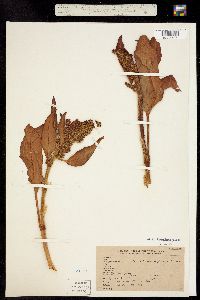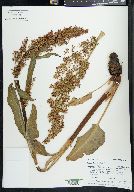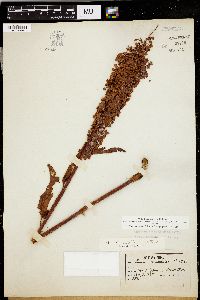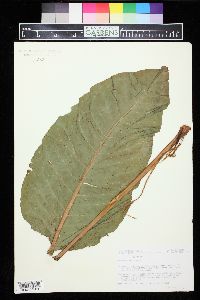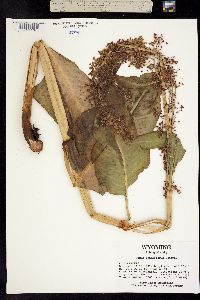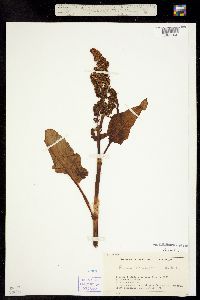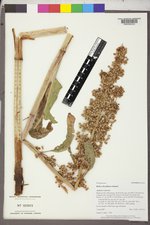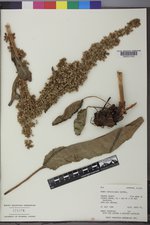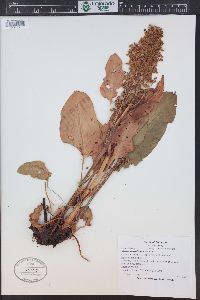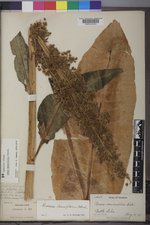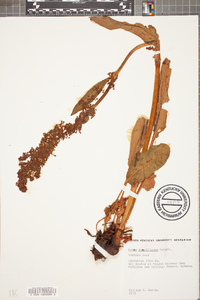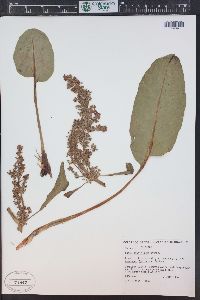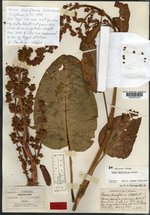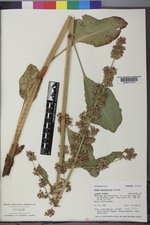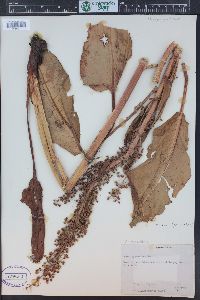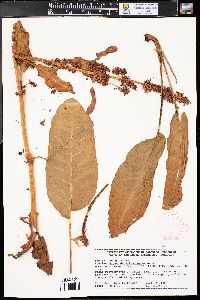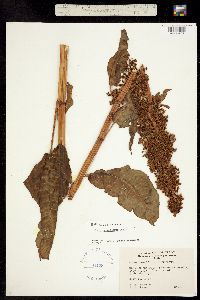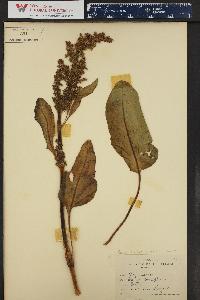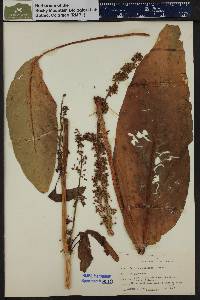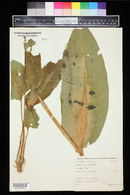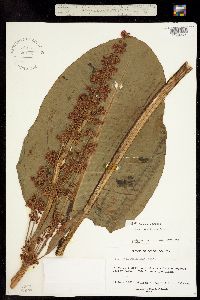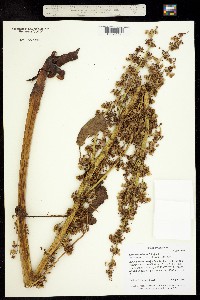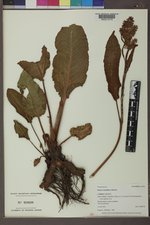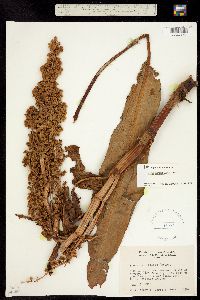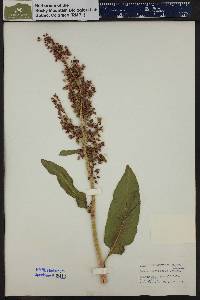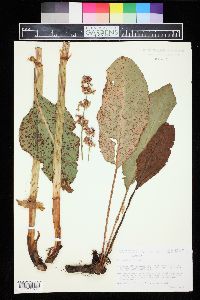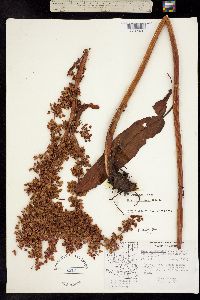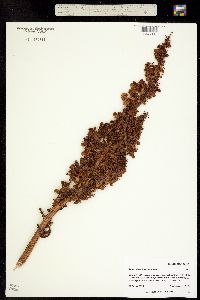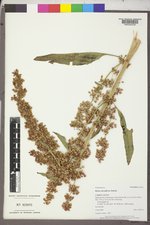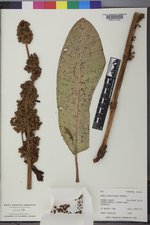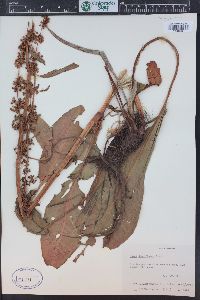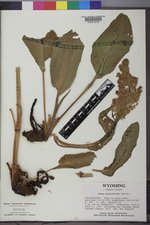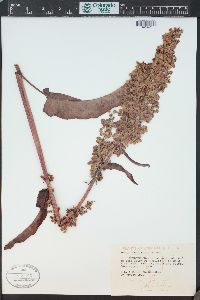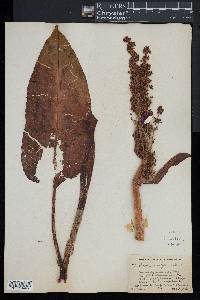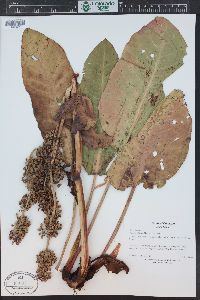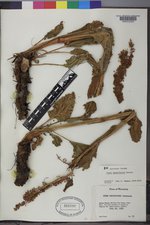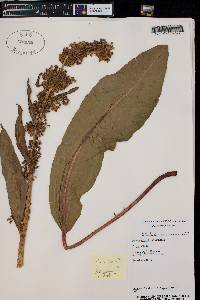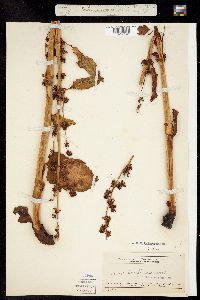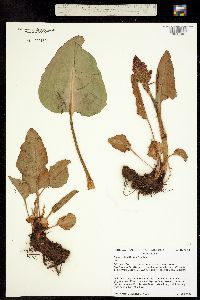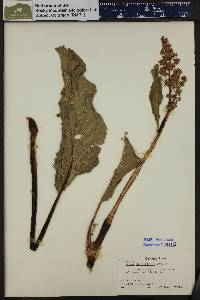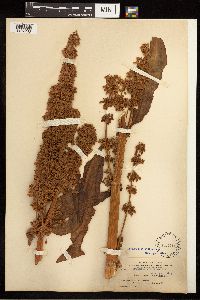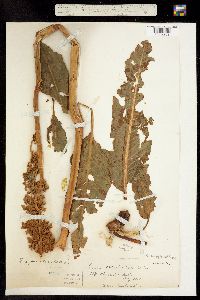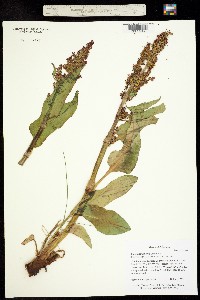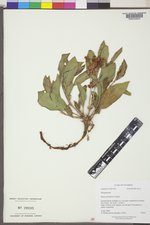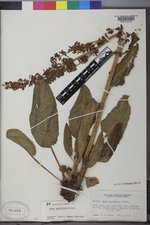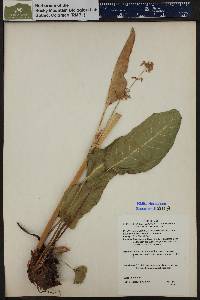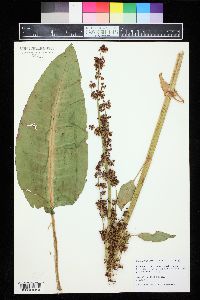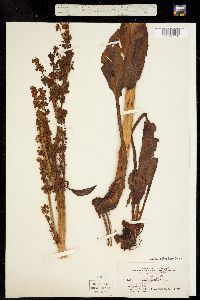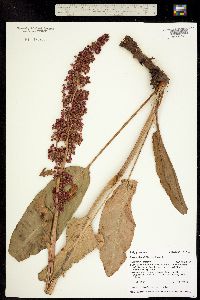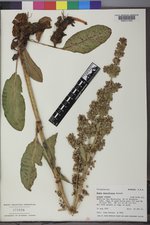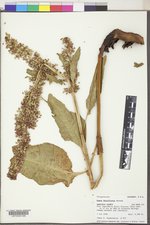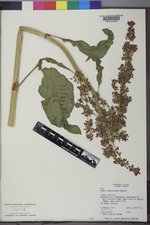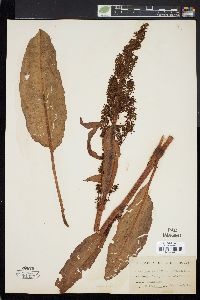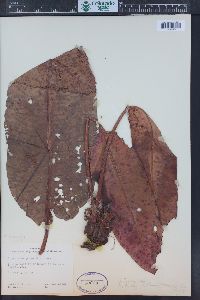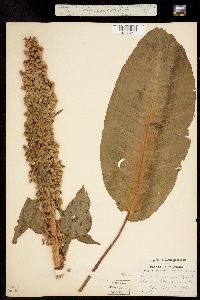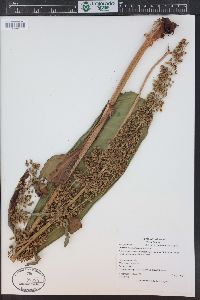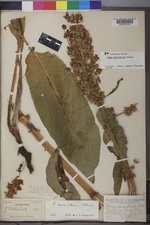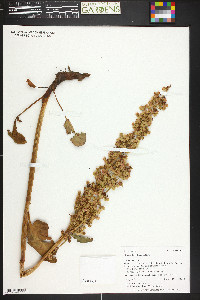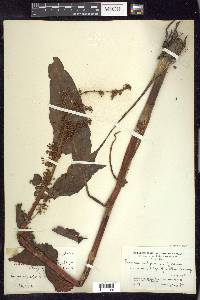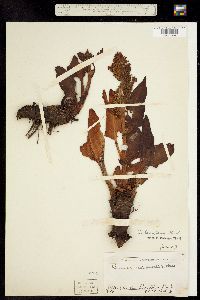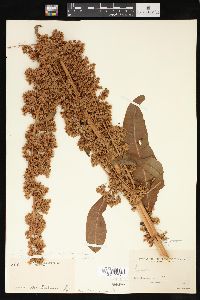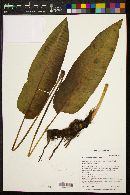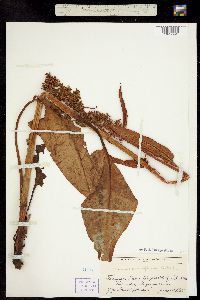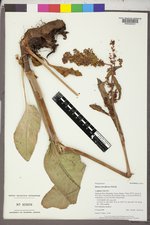
|
|
|
|
Family: Polygonaceae
Dense-Flower Dock, more...denseflowered dock
[Rumex polyrrhizus] |
Plants perennial, glabrous or indistinctly papillose-pubescent, with creeping horizontal rhizome. Stems erect, branched above middle (only in inflorescence), 50-100 cm. Leaves: ocrea deciduous or partially persistent at maturity; blade with large lateral veins alternating with short ones, oblong or oblong-lanceolate, 30-40(-50) × 10-12 cm, more than 3 times as long as wide, base broadly cuneate, truncate, or weakly cordate, margins entire or indistinctly repand, flat, apex obtuse or broadly acute. Inflorescences terminal, occupying distal 2 of stem, usually dense, narrowly paniculate. Pedicels articulated in proximal 1/ 3, filiform, 6-16 mm, articulation indistinct. Flowers 10-20 in whorls; inner tepals ovate-triangular or subcordate, 5-6 × 4.5-6 mm, widest at or near middle, base weakly emarginate, margins entire, erose, or indistinctly denticulate mostly at base, apex abruptly narrowed, acute or subacute; tubercles absent. Achenes deep brown to reddish brown, 2.5-4(-4.5) × 1.8-2.5 mm. 2n = 120. Flowering late spring-early summer. Along streams and rivers in montane, subalpine, and alpine zones; 1500-3000(-3500) m; Colo., N.Mex., Wyo. The following three species are closely related to Rumex densiflorus, all belonging to subsect. Densiflori Rechinger f., and possibly form one polymorphic 'macrospecies' (K. H. Rechinger 1937). Á. Löve (1986) treated R. orthoneurus and R. pycnanthus as subspecies of R. densiflorus. However, the variability of this aggregate is insufficiently known, and I prefer to treat it as consisting of four 'microspecies.' Rumex densiflorus is reported from northwestern New Mexico (W. C. Martin and C. R. Hutchins 1980), where it most probably occurs; records for southern Idaho (R. J. Davis 1952) and Arizona (J. H. Lehr 1978) need confirmation.
General: Perennial, 50-100 cm tall; stems erect, branched above the middle; herbage glabrous, sometimes pubescent; rhizomes horizontal, creeping. Leaves: Basal and cauline, alternate, oblong or oblong- lanceolate, 30-40 cm long, 10-12 cm wide, glabrous, large lateral veins alternating with shorter ones, margins entire or indistinctly wavy, base wedge-shaped, truncate, or slightly cordate, apex obtuse to broadly acute; ocrea deciduous to partially persisting at maturity; basal and lower cauline blades petiolate, upper cauline blades sessile. Flowers: Inflorescence terminal, broadly to narrowly panicle-like, sometimes interrupted at the base; pedicels filiform, 3-8 mm long; flowers 10-25, arranged in whorls; perianth campanulate, greenish, pinkish, or reddish brown, the inner tepals broadly ovate to almost deltoid, 3.5-6 mm long, margins entire or minutely and indistinctly dentate; tubercles 3, with one distinctly larger; flowers March-October. Fruits: Achene, 2.5-4 mm long, deep brown to reddish brown. Ecology: Montane forests, alpine to subalpine habitats, along streams and rivers; 1500-3000 m (5000-10000 ft); Apache County; southwestern U.S. Notes: Three additional Rumex species occur infrequently within our range and are distinguished as follows: R. orthoneurus (Chiricahua dock, Blumer-s dock) has leaves with lateral veins mostly equal in size and inner tepals gradually narrowed into an acute apex, widest in the proximal third; R. nematopodus (Arizona dock) [=R. aquaticus ssp. nematopodus] is distinguished primarily by the pedicels 12-20 mm long, 3 (4) times as long as inner tepals; and R. occidentalis [=R. aquaticus ssp. fenestratus] has pedicels 5-13 mm long, not more than 2- 2.5 times as long as inner tepals. All three species occur in meadows, along rivers and streams, and in other wet habitats. Editor: Springer et al. 2008 |
This project was made possible in part by the Institute of Museum and Library Services [MG-70-19-0057-19].
Powered by Symbiota

